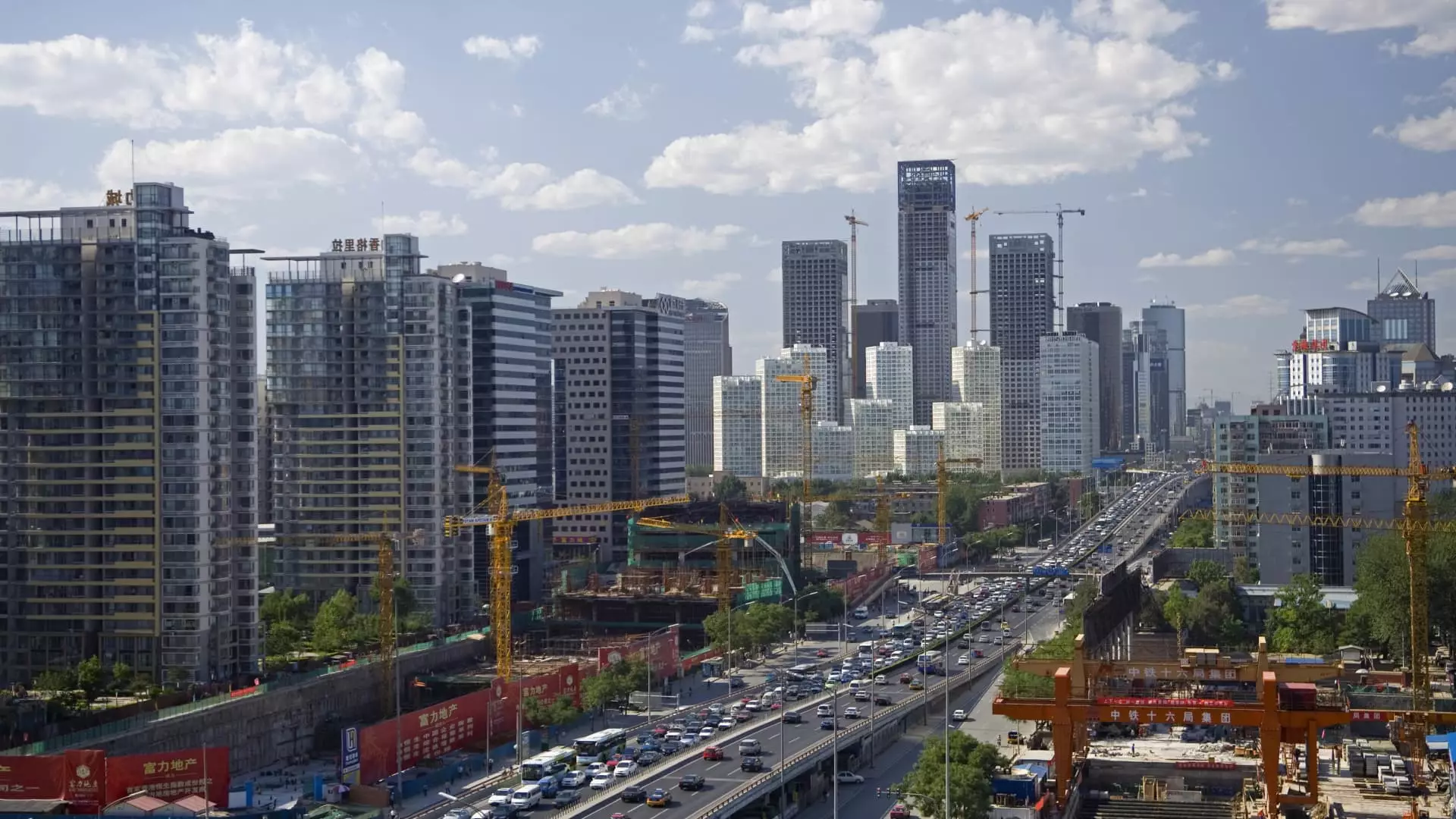In the face of formidable challenges, China’s economy has reported an unexpected growth of 5.4% in the first quarter of the year, defying the pessimism that has clouded market expectations. Analysts, anticipating a more conservative 5.1%, found themselves taken aback by the resilience shown through robust indicators such as retail sales skyrocketing by 5.9% and impressive industrial output increasing by 7.7%. This resilience, however, masks a deeper vulnerability lurking beneath the surface—one that the high-frequency data subtly hints at, showcasing the precarious nature of this growth.
The upbeat stats may suggest a robust recovery journey initiated in late 2024, primarily driven by broad policy stimulus measures. Yet, one must tread carefully when celebrating such figures. Detractors will argue that numbers can obscure the real story. While the Chinese leadership projects an annual growth target of around 5%, this may serve more as an optimistic wish rather than a realistic assessment, especially in light of the intensifying trade war with the U.S.
Real Estate: The Achilles’ Heel
Fixed asset investment poses a significant concern, particularly with the real estate sector suffering a distressing downturn of 9.9%. The once-vibrant property market has become a millstone around the economy’s neck, dragging the entire growth projection down with it. Analysts have long warned that real estate reliance has cemented itself as China’s Achilles’ heel, where overdependence on this sector threatens to destabilize wider economic efforts. The United States’ aggressive tariffs are compounding this issue, dampening market optimism and starving key sectors of foreign investment.
Investment in infrastructure and manufacturing has seen a rise, but these sectors cannot completely compensate for the myriad challenges that real estate poses. The government’s refrain of pursuing innovation to lay a new foundation for growth echoes hollow in the backdrop of failing real estate fortunes. In a world where uncertainty reigns, reliance on old economic strongholds is a dangerous gamble.
The Looming Shadow of Tariffs
The economic consequences of the tit-for-tat tariffs imposed by the U.S. weigh heavily on China’s potential future growth. With tariffs on Chinese goods reaching a staggering 145%, it’s undeniable that such measures will constrict exports and suppress economic expansion. Economists at Morgan Stanley forecast a rapid deterioration in growth from the second quarter, emphasizing that a daunting landscape of tariffs erodes both external demand and investor confidence. The projections are grim, with UBS Group predicting a mere 3.4% growth for the year.
The export slowdown harbors broader implications not just for China but for global economic health. A decline in exports can create rippling effects that destabilize supply chains worldwide. As China potentially watches its exports to the U.S. plummet by two-thirds, it provokes a profound question: can it pivot effectively to bolster domestic consumption in time to avoid a broader economic calamity?
Policy Responses: A Double-Edged Sword
Given these challenges, there have been calls for more forceful stimulus measures to support domestic consumption while easing the reliance on the volatile export markets. While it might seem wise to infuse the economy with fiscal stimulus in the range of 1-1.5 trillion yuan, one must question whether such measures will yield tangible results. Can mere monetary easing instigate the kind of robust domestic consumption needed to buffer the economy against external shocks? A higher investment in innovation may yet prove to be a pivotal tactic for long-term resilience but will require time that the current economic climate may not afford.
Concern is rife that the Chinese authorities may find themselves in a cycle of short-term fixes that ultimately fail to build a sustainable economic model. Instead of trudging down the path of reactive policies, there must be a concerted push towards innovation-led growth that moves beyond reliance on traditional sectors.
The Road Ahead: Hope or Despair?
Navigating this economic landscape requires a delicate balance of optimism and caution. The authority’s response to this crisis and their ability to stimulate domestic demand will play critical roles in shaping the upcoming quarters. However, with uncertainty about the external environment looming large, the question remains: will China be able to harness its enormous potential and transform its economy into a more self-sustaining model, or are we witnessing the slow unraveling of a growth story marked by overreliance and excessive ambition? The resilience showed in the GDP growth must not overshadow the shadowy details of underlying fragility, nor should it distract from the urgent need for proactive and creative solutions.


Leave a Reply